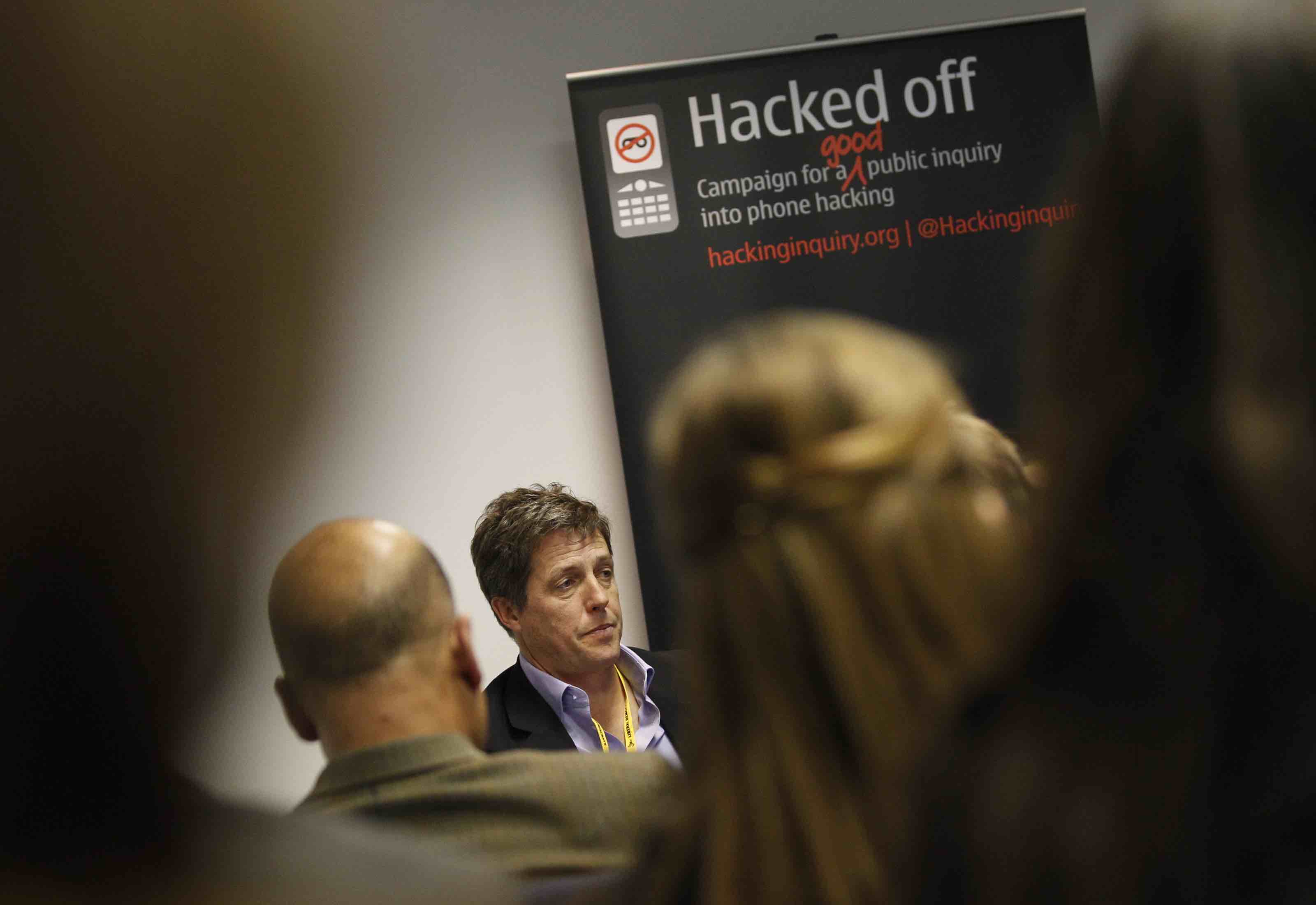The news media, as an institution, are integral to much of politics and public life. With this role often comes public criticism. Journalists do not always get the story right and sometimes omit important voices and points of view. In such cases, criticism can be fair and help those interested in fixing mistakes and improving coverage. Given the influence that many news outlets have, criticism can also be about members of the public holding power to account. On the other hand, this criticism is sometimes unfair and hostile, and can veer into dangerous rhetoric aimed at undermining the free press. This hostile rhetoric often disproportionately affects women and journalists from minority and underprivileged backgrounds. That is especially worrying when cheered on by powerful politicians and driven by organised campaigns seeking to silence individual journalists or independent news media.
Our podcast on the chapter
Spotify | Apple | Google | Transcript
Such varied forms of criticism are an integral part of public life, and often especially visible on social media. In our survey, we asked how often people are exposed to criticism of the news media, and, in this chapter, we examine differences in who sees criticism, as well as differences across markets. We also look at the sources of criticism people say they are exposed to and on what platforms they come across it.
At the outset, it is also important to underline that our findings are based on survey data, which, while useful for the purposes we use them for here, (a) rely on respondents’ own definitions of what constitutes criticism, (b) are not able to capture which specific media or journalists people have seen criticism of, (c) do not provide a basis for distinguishing between fair and unfair – or outright dangerous – criticism, and (d) do not tell us what effects exposure to criticism, fair or unfair, might have on people’s views or attitudes.
Exposure to news media criticism
We asked respondents in every market how often, if at all, they saw or heard people criticising journalists or the news media where they lived.1 On average, across all markets, half of people (53%) say they are ‘very’ or ‘quite often’ exposed to news media criticism.
It is important to note at the outset, however, that there is a large amount of variation in reported exposure to news media criticism across markets. At the higher end of exposure are many Latin American and Southern/Eastern European countries, where as many as two-thirds of people say they very or quite often see news media criticism. Highest of all is Peru, at 71%. At the lower end are markets such as Singapore, Denmark, Germany, and Switzerland, where only one-third of people say they regularly see such criticism. Lowest of all is Japan, at just 22%. Across all markets, political partisans are more likely to report that they ‘very often’ see news media criticism.
In the Executive Summary, we noted the link between higher levels of exposure to news media criticism and greater levels of media distrust. In Eastern European markets such as Bulgaria, Slovakia, and Hungary, this link is particularly strong. These countries have seen continued pressure and attacks on journalists from politicians (Slovakia), state capture of mainstream media and the vilifying of independent news outlets (Hungary), and ideological struggles between media outlets with different national visions (Bulgaria). But it’s difficult to say in many cases which direction this trust–criticism relationship goes: it may be that more exposure to criticism influences people’s views, leading them to trust the news media less. At the same time, those with low trust in news may notice or seek out more criticism, precisely because of their low trust.
Sources of news media criticism: The role of politicians and other public figures
In the aggregate, across all markets, politicians and political activists are the most frequently cited source of news media criticism among those reporting any level of exposure in general, with 42% saying this is who they have seen or heard criticism from in the last year. This is followed closely by exposure to criticism from ‘ordinary people who you don’t know’ (40%) and friends/family (38%). Lowest among the sources of news media criticism that people report being exposed to is criticism from other media outlets (27%). Many partisan and alternative news outlets often criticise other media, but these brands tend to be used by smaller sections of the public.
Proportion of those that have heard people criticising journalists or the news media that have heard criticism from each
All markets
-
From politicians or political activists

42%
58% in the United States, but just 28% in Norway and 19% in Singapore.
-
From ordinary people you don't know

40%
53% in Peru and Colombia
-
From colleagues, family, or friends

38%
48% in Chile, but just 16% in Japan.
-
From celebrities and social influencers

33%
47% in the UK, 43% in the United States.
-
From other journalists

27%
40% in the USA, but just 15% in Finland.
Q2_Criticism_2023. Which of the following, if any, have you seen or heard criticising journalists or the news media in your country in the last year? Please select all that apply. Q1_Criticism_2023. How often, if at all, do you see or hear people criticising journalists or the news media in
There are, of course, big differences across markets. Countries such as the United States (58%), Turkey (53%), and Hungary (53%) rank among the highest in reported exposure to criticism from politicians or political activists. In the polarised US context, reported exposure to news media criticism from politicians among people on the left and the right is high (64% and 68%, respectively, of those reporting exposure to criticism, compared with 55% of centrists). Democratic politicians have been vocal in their criticisms of Fox News in recent times,2 while members of the Republican Party have long decried the so-called ‘liberal media’. Meanwhile, President Erdoğan in Turkey and Prime Minister Orbán in Hungary continue in their long campaigns against independent journalists. There is less reported exposure to criticism from politicians in markets like Norway (28%), the Netherlands (31%), and Denmark (35%).
Across markets, those reporting greater exposure to news media criticism from politicians are older (46% of those aged over 45, compared with 37% of those under 45) and more interested in politics (55% of those extremely/very interested in politics, compared with 29% of those not interested). They are also slightly more politically partisan (45% of those on the left and 48% on the right, compared with 43% of those in the centre).

Politicians or political activists are the most frequently cited source of news media criticism in a third of all markets (16 out of 46), with reported exposure from politicians being considerably more prevalent in Eastern Europe and markets such as Kenya, Turkey, Hungary, and the United States. This is a reminder that some of the most prominent and consistent criticism of journalism tends to come from those in political power – at times from those with an axe to grind against the free press. This criticism can sometimes become vitriolic, stoking the ire of partisans who follow these political leaders. Given what we know from decades of research on the role of elite cues in how people form opinions (e.g. Fawzi 2019), it is also likely to be among the most consequential forms of criticism in terms of undermining trust in news or encouraging people to turn against the media.
Meanwhile, in the UK, celebrities, comedians, and social media personalities rank as the primary source of exposure to news media criticism (with 47% of those exposed to media criticism in the UK reporting these as a source, followed by politicians at 41% and family/friends at 40%). The UK has the highest reported exposure to celebrities as a source of media criticism among the markets we survey, where figures like film star Hugh Grant, who has publicly fronted the Hacked Off campaign to draw attention to press accountability and the protection of people from harmful and unethical journalistic practices, and Prince Harry, who has highlighted the media’s treatment of himself and Meghan Markle, feature as prominent critics of the press.

The US also ranks high (4th) in reported exposure to criticism from celebrities, at 43%, and high (3rd) in reported exposure to media criticism from other media (at 40%), with the latter likely being driven by the increasingly antagonistic relationship between politically polarised news outlets.
Across markets, reported exposure to news media criticism from celebrities is slightly higher among younger people (36% of those aged under 45, compared with 31% of those over 45), likely because of their more frequent use of social media and the higher attention they pay in general to these individuals for news and information.
The roles of social media and the public in disseminating news media criticism
Turning from sources of criticism to platforms for criticism, we also asked people in 12 markets3 where they mainly saw or heard criticism of journalists or the news media. Social media is by far the most common way people say they are exposed to criticism, with 49% of those reporting exposure to criticism across markets saying this is where they see or hear it, followed by discussions with people they know (36%) and the news media themselves (35%). Most of those who see criticism have seen it on two or more platforms (including offline) but, across the markets surveyed, a quarter of people (25%) say they have only seen it via social media.
These numbers are perhaps not surprising since, on social media, there is much more opportunity to see news media criticism from all types of sources, whether they are politicians, celebrities, or everyday people. Younger people are more likely to report seeing news media criticism on social media, while a higher proportion of those in older age groups report seeing criticism via the news media.
Exposure to criticism from friends/family and people in the general public is particularly high in Latin American countries such as Chile, where the actions of journalists in recent times have attracted sharp criticism on social media (48% of those exposed to criticism in Chile report exposure from family/friends, 50% from the general public). In Colombia – a market also high in reported exposure to criticism from the general public (53%) and family/friends (47%) – President Gustavo Petro has been lashing out at the press on Twitter, stoking concerns that citizens may interpret his messages as permitting attacks on journalists. In Peru, a country which has been marked by recent political turmoil and which sees high levels of exposure to criticism from the general public (53%), there are rising concerns about threats and attacks against journalists. In these countries, we are reminded of how certain members of the public can take cues from political leaders and amplify sometimes forceful criticism of the press on social media platforms. It is also clear that such criticism sometimes takes the form of campaigns orchestrated by political actors with influencers and PR companies working on their behalf (see e.g. Ong and Cabañes 2019).
Finding the line between fair and unfair criticism
As this chapter shows, criticism of the news media is pervasive, coming from a range of sources. In some markets, criticism is particularly prevalent from politicians (e.g. US, Turkey, Hungary), while in others it can come more often from other public figures (e.g. UK) or everyday people (e.g. Chile, Colombia, Peru). The sources and drivers of news media criticism vary from market to market.
It is important to note again that not all criticism is bad, and that a large amount of criticism does not necessarily mean that journalists are doing a poor job. As often powerful entities which also deal out their fair share of criticism – of politicians, businesspeople, celebrities, and others – this criticism sometimes comes with the territory, and some of the criticism is fair. At the same time, there are cases where a large share of criticism is driven by powerful actors systematically trying to undermine independent media, or spread by highly motivated networks of partisans attacking the media for political purposes.
In the UK, which has long had robust protections for the press, allowing journalists to engage in fierce criticism of public figures, criticisms in kind are often necessary. Criticism can make the media more accountable to the public they profess to serve and improve journalism in the process. Frequent jibes at the press from politicians, celebrities, and members of the public – which may be debated as fair or unfair, depending on the perspective – are part of public discourse. When the news media has been shown to have caused harm – such as in the wake of the phone-hacking scandal and subsequent Leveson Inquiry in the UK – criticism is important for instigating reform, just as it can be a necessary part of reckoning with how the news media have dealt with issues including, for example, climate, gender, race, and sexuality.
But in markets with less robust press protections or declining press freedoms, criticism can take on a different character. On the back of anti-media rhetoric from populist politicians and hardline leaders, coordinated harassment campaigns can become super-charged by partisans on social media, and be dangerous and harmful for those at the receiving end. The often unfair and vitriolic form of criticism which comes from this, and which is intended to silence independent voices, can overwhelm individual journalists and sometimes lead to real-world violence against them. It is in these circumstances where criticism becomes something altogether different – and more dangerous for independent journalism and news media.
Footnotes
2 These 12 markets were: US, UK, Germany, Belgium, Netherlands, Slovakia, Croatia, Japan, South Korea, Taiwan, Hong Kong, and Singapore.


